CREO CREO CREO
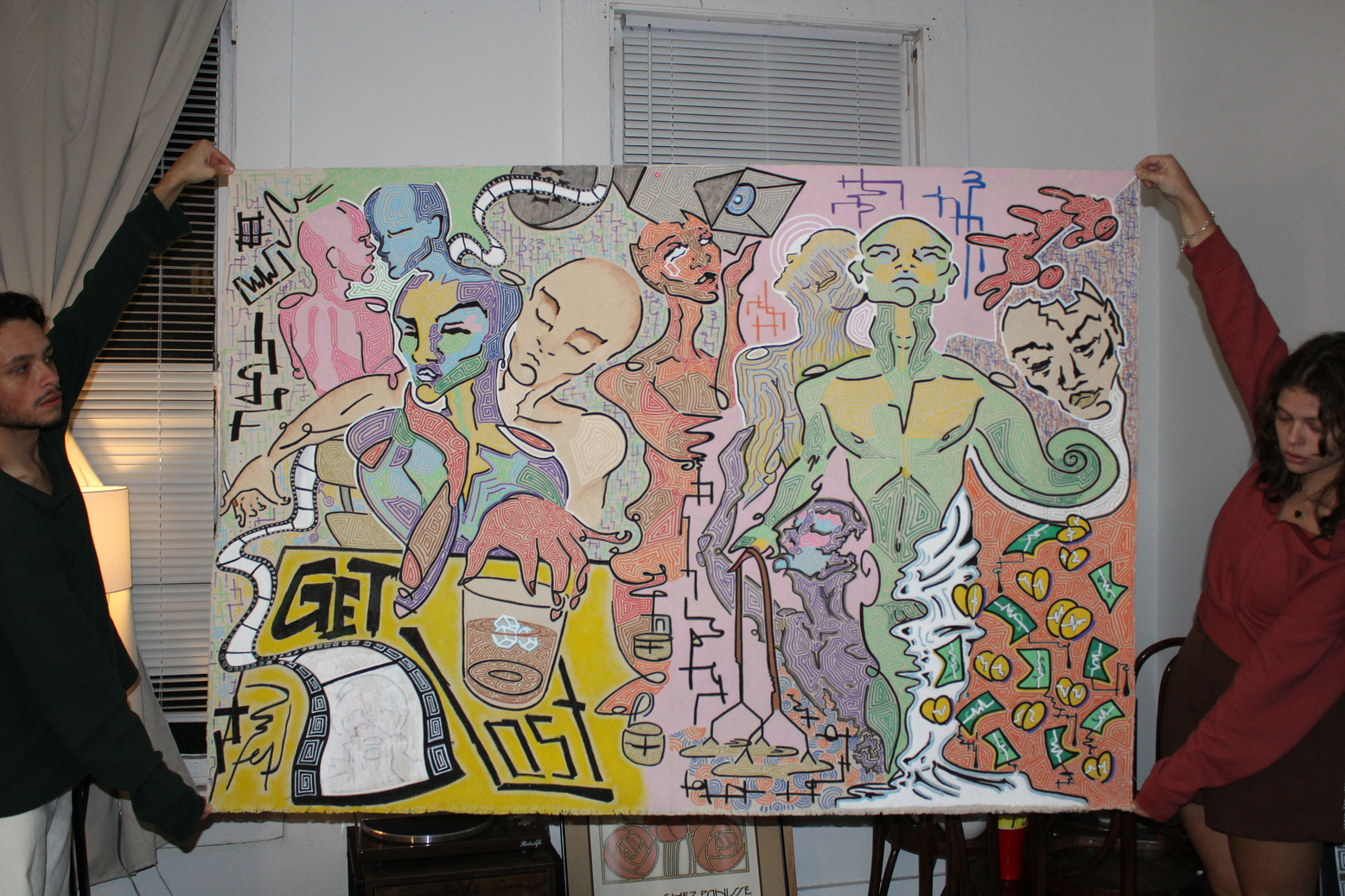
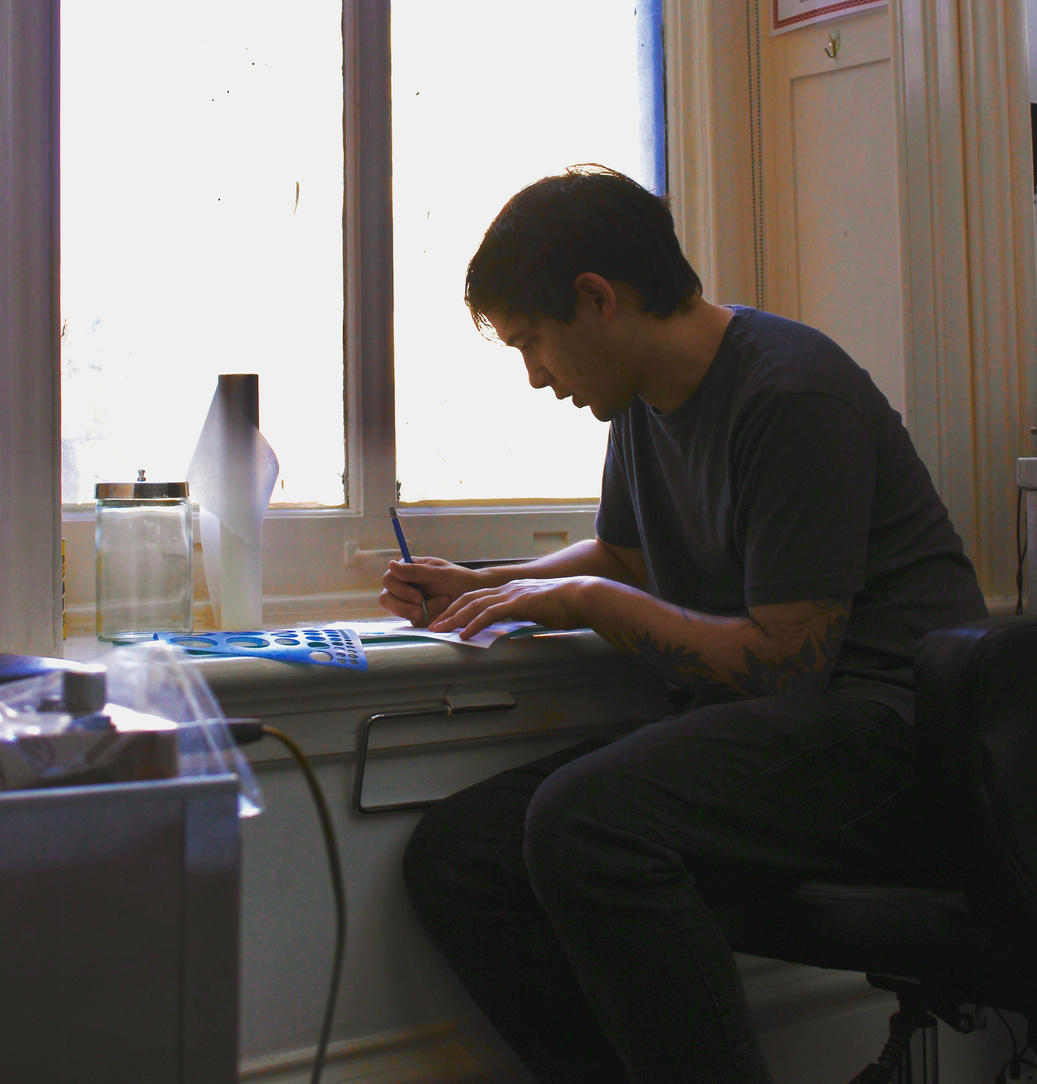

Articles
WTF IS GOING ON WITH DIEGO GARCIA AND JACOB DUDEK
Written by Rachel Barrish
November 8, 2022
What The Fuck is going on is A duo exposition of artists Diego García and Jacob Dudek. The two met through mutual friends and found a similar passion for art. After meeting, the two decided to make some pieces together, collaborating on a series of Combine paintings. Although the artists have evident individual styles, they overlap in shape and color usage. The artist collaboration is an unlikely pair.
Diego Garcia is from Costa Rica. He has a mixed background, with his family being from Cuba, Nicaragua, and other areas in Central America. He grew up with a love and fascination for art. When he was young, he wanted to be a filmmaker or an animation artist; he used to find himself making cartoon stories in the style of club penguin characters. Around the time he entered high school, he found his true passion for music. Diego had lots of time for Self-isolation during the 2020 pandemic and, during this time, taught himself how to play piano. He became a self-taught musician with an EP that debuted in April 2022. Diego currently studies music at Garnish Acadamy, based in Brooklyn, New York. He moved to Savannah, Georgia, in late 2021 from Costa Rica to have access to the COVID-19 Vaccine and live with his sister. During his move, there was time to reflect on life from the past few years, personally and politically. When he got to Savannah, he picked up a sketchbook for the first time in a long time and started expressing himself through visual art and music. He said
“I have never been someone to use painting as an emotional liberation tool, but it just got very dark this year at a certain point, and not even music was cutting that. I wasn’t able to fully express myself and feel confident enough in what I was saying with music, so I got into drawing and doing all of that again. I saw myself being able to be more free while expressing myself through visual art.”
Pictured Diego Garcia holding his first created painting from the series.
Garcia is a mere 19 years old and has a vivid imagination. His characters are based on people from his past. They show imagery of his emotions while making the paintings and reflections on his feelings about those past relationships. The images touch on subjects such as capitalism, love, loneliness, human behavior, observance, and perception. His paintings for the upcoming show What The Fuck Is Going On on November 15th began one night after watching a movie. It was a Hulu original about an artist finding her style. It inspired him to start painting on a large scale. Later that night, at 3 AM, Diego picked up a canvas lying around in his room and let his stream of consciousness flood onto the surface before him. Without a plan, he just let whatever came to him come out on the page. Through the art, he became nostalgic for someone he used to know and for lost relationships. He uses art as a coping mechanism; this led him to find his style.
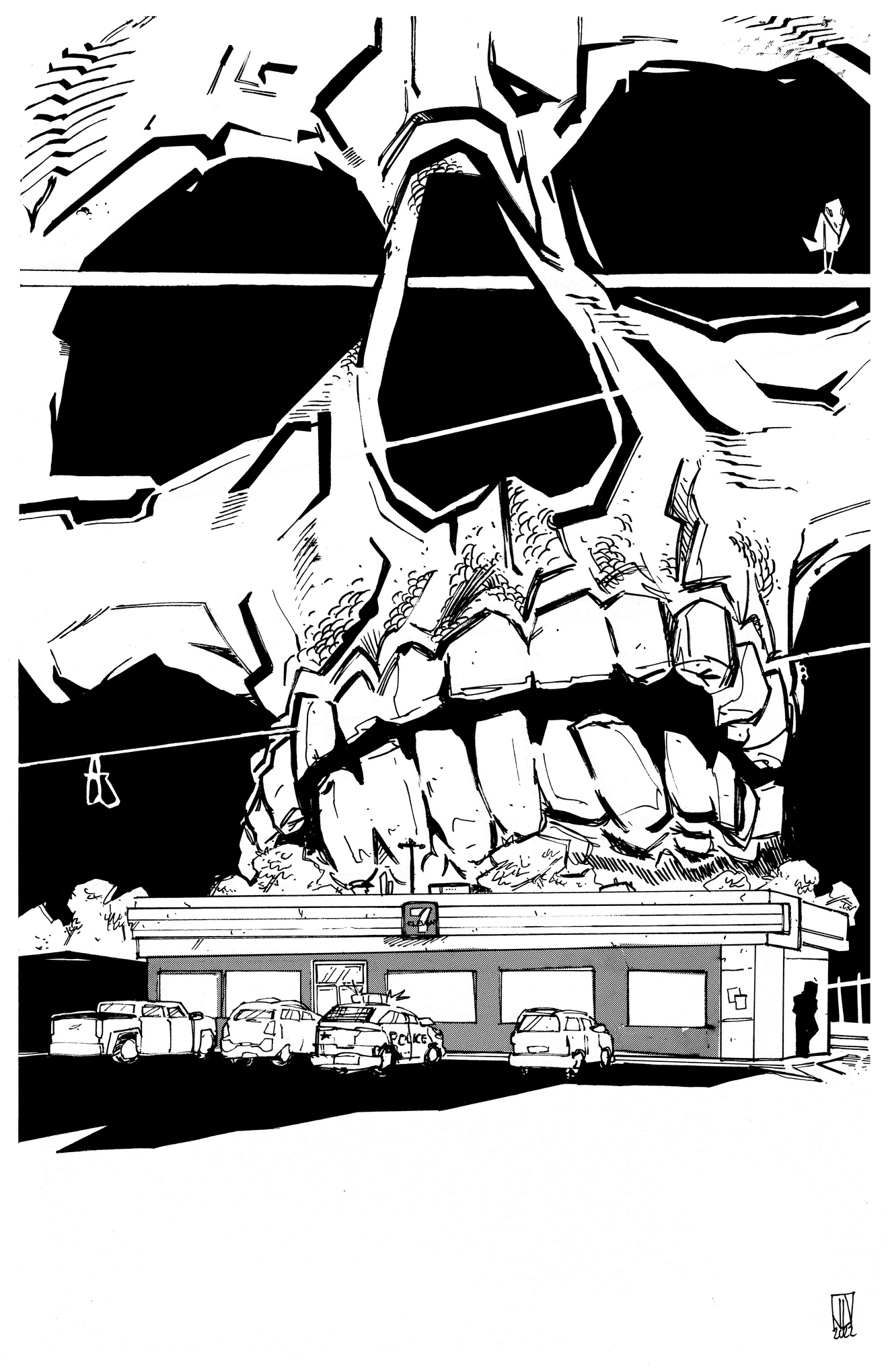
Jacob Dudek is a classically trained sequential artist with a degree from the Savannah College of Art and Design and, most recently, a Neighborhood Comics Resident Artist. He is a talented comic book artist who creates other worlds in his mind. Dudek is from Saginaw, Michigan, a small town located thirty minutes away from the Flint water crisis, which didn't affect him but did affect the chipotle he worked at when he was in high school. Dudek has always known who he was. When he was a child, he played with action figures and loved superheroes. He did not leave his house unless he wore his Spiderman costume. As a child, he loved what heroes represented. He wanted to be them. As of his junior year of high school, he was planning on joining the Marines because one of the things he thought was cool when he was a kid was futuristic army men. He wanted to be a living embodiment of his childhood dreams to be a hero; no matter what he did, he strived to make a difference. He had a defining moment when he realized he couldn’t be that hero, so he looked for the closest he could get. Before he knew anything about creating characters and storytelling, he loved to color and would frequent coloring books; he learned the basics of art through copying, filling in the lines, and repetition. He found a love for animation and storytelling and reminisced on his childhood and his admiration for superheroes.
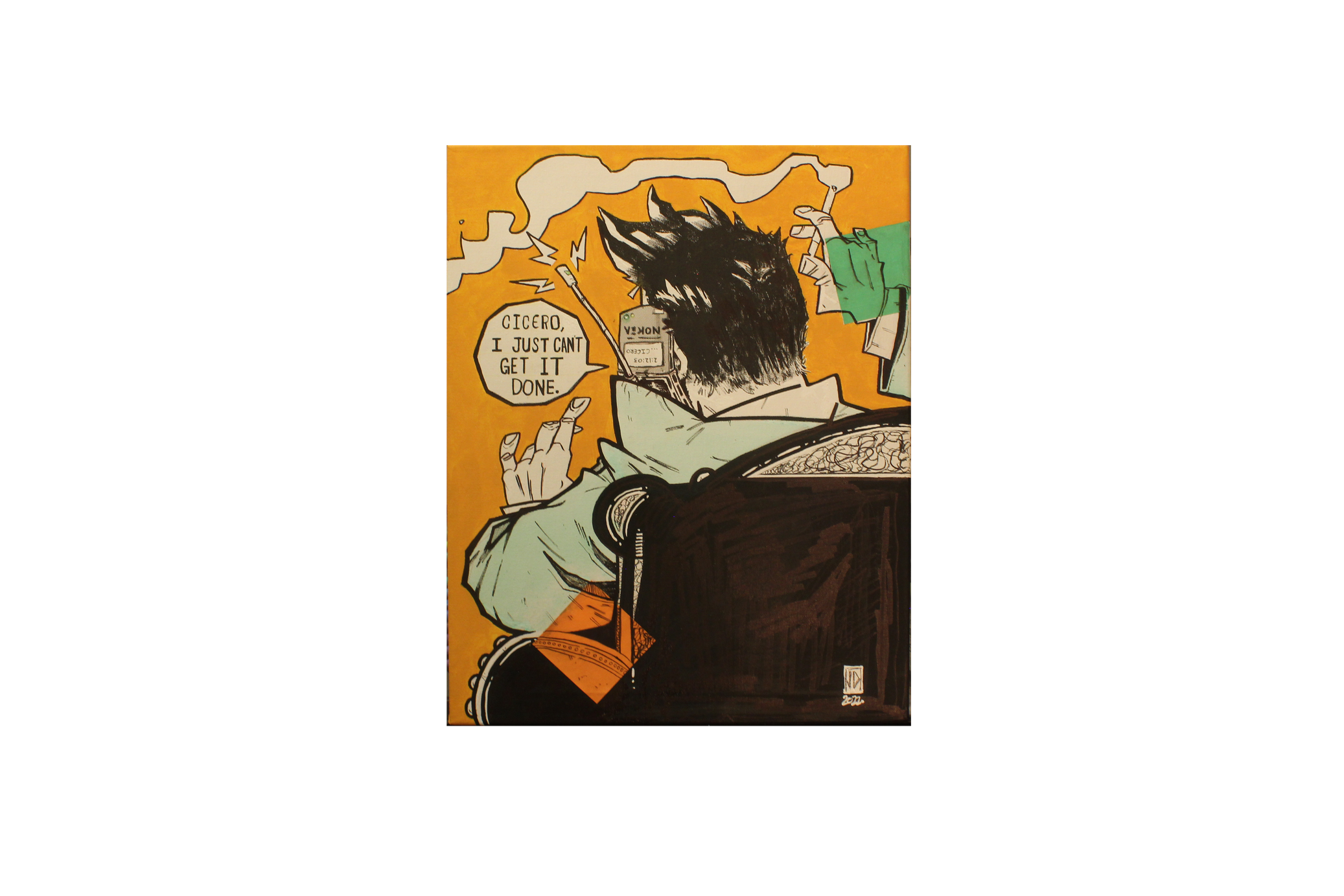
A Bad Job by Jacob Dudek
Pictured Jacob Dudek creating one of the pieces from the series
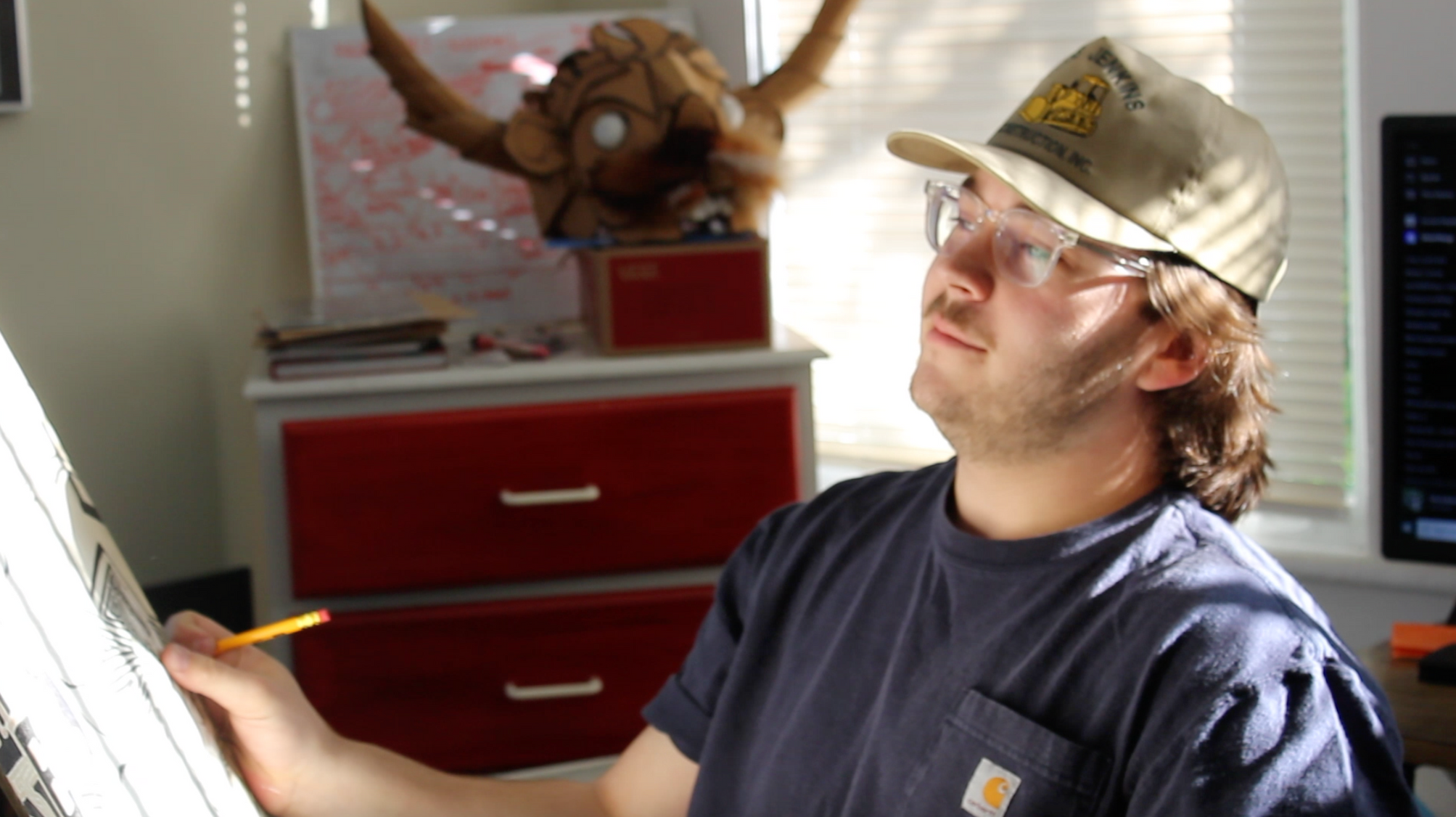
Death Behind a Seven Eleven by Jacob Dudek
Jacob loves storytelling, specifically stories that make you feel like you’re in the real world but have otherworldly foundations. He loves Spiderman because the character is relatable yet unattainable. When making his art, it has deep meaning for himself, but he doesn’t want it to be so objective, to allow the viewer to have their interpretation. He said, “no matter whether it’s the female protagonist in this story or the grimy guy who lives under the bridge in the story, all of them are projections of the story that I want to tell… A lot of the characters are driven with me in the driving seat, pushing them wherever they go.” When making large-scale paintings, Jacob lets his mind flow each image is a projection of his feelings. When creating his focal piece for the gallery event (death behind seven eleven), he wanted it to feel like you were reading A reveal in a comic book. This piece stands out because it is the only one that pushes the comic book style; all of the art has reference to the style with a word bubble or text thrown in. But Death behind a seven-eleven made from 12-point micron and Tombow Fudenuke shows a moment in the artist's life shown in a playful way. Dudek brings life experiences into his art in hopes of viewers' enjoyment.
Both artists create by putting all their emotions on the page. Their art holds deep meaning for themselves but is portrayed in a fun and energetic way to the viewer. Both artists share a love for bold colors and expressive shapes and movements. Although they come from different backgrounds both geographically and artistically they have come together to create a series of Combine paintings with the purpose of expanding their art.
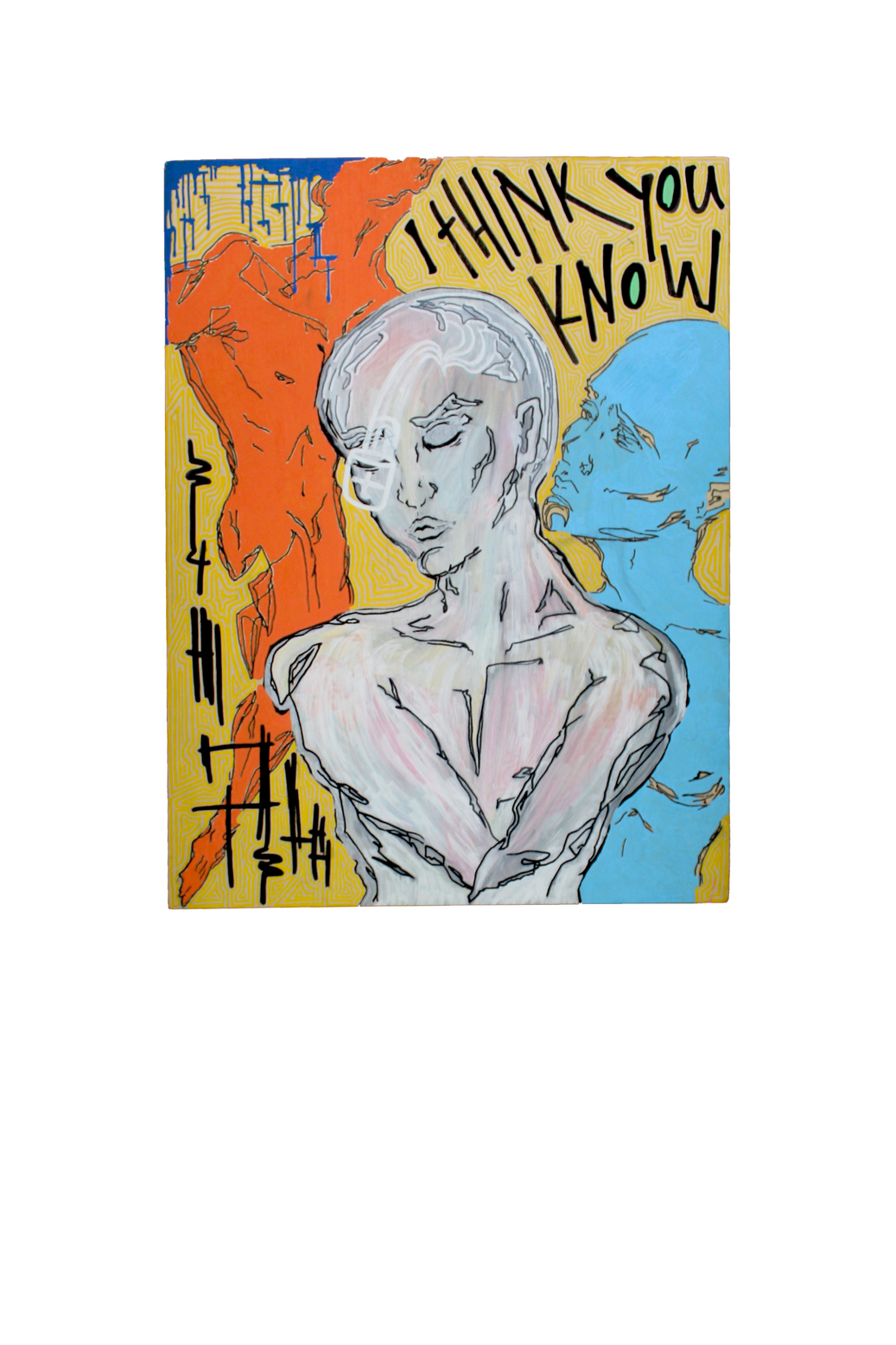
I Think You Know by Diego Garcia

Where Does Time Go by Diego Garcia
MAX SEMRAU, BOY ATOMIC.
Written by Katerina Servi
BOY ATOMIC is a look inside the brain of local Atlanta creative, Max Semrau. Born and raised in Grant Park, Atlanta, Georgia to parents who are small business owners and very creative in their own way, he grew up surrounded by local artists of the area, making art a core value of his from a young age.
Semrau recalls his nursery room, one of his earliest memories of inspiration, as the colors and characters that surrounded him in his nursery every day shaped his mind and taste at a young and impressionable age, maturing with him over the years.
He watched cartoons a routinely as a child, and to this day, keeps a morning ritual of watching The Simpsons every Saturday morning over a cup of coffee.
However, his appreciation for color and cartoons faded away at one point in his life, throughout high school he began to drift away from the use of color in his work as he thought people would take him more seriously if he stopped using color and took a more minimal approach towards his work.
Max is now 23 years old, but came out at 15 years old as a freshman in high school. He recounts not wanting to let being gay define his personality, and felt pressure to fit in with the people around him, quieting who he really was in the process.
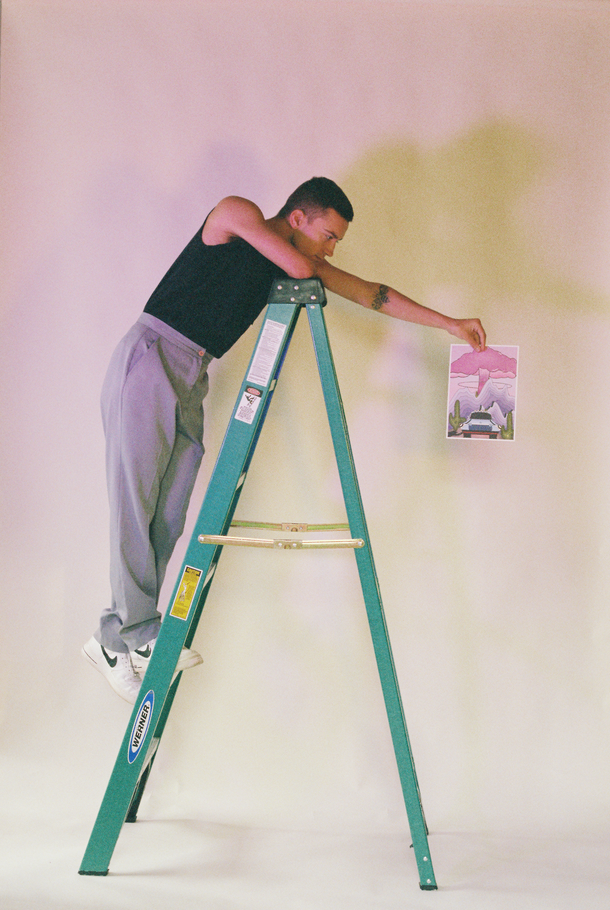
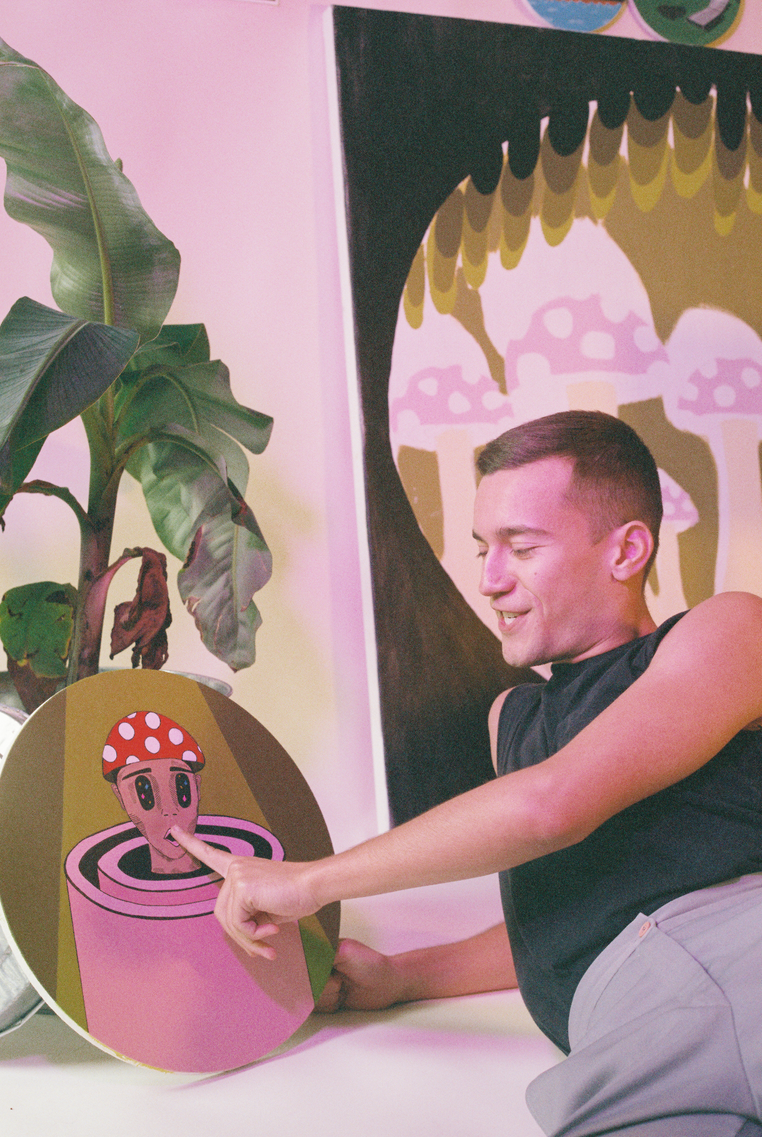
It wasn’t until he found kickboxing at 17 years old, at a women-owned gym called Vesta Movement, located on Ponce De Leon Ave, Atlanta. Within two months of attending classes, he began to work at the front desk. Semrau remembers feeling like he was comfortable being who he was 100% of the time, without having to hide any part of his personality. It was around that time that his art really began to flow and become second nature for him, and credits the Vesta community for bringing out his true self, and as a result diving into his creative passions. Today, he works part-time as a kickboxing instructor at Vesta Movement.
Semrau soon found he couldn’t stay away from creating his own interpretations of the childlike joy cartoons carried with them, and his work quickly returned to an eclectic color palette and stylized aesthetic – “sh*t can be fun, and you can still be an adult”, he recounts, describing this time in his life as something that “demanded that there be color”, as a metaphor for no longer suppressing his true self.
While studying scenic and costume design at Emerson College in Boston, Max worked as an assistant wardrobe, prop, and set stylist in the summers and winter breaks between school, when he came back to Atlanta. His first shoot that he ever worked on was for Cardi B and Offset for their pregnancy shoot for Rolling Stone. He eventually moved up from intern to production assistant, working for clients and gaining experience to ultimately end up being a stylist.
During this time, he also started an Instagram account under the name Killer Bees, influenced by his work in wardrobe styling and his appreciation for fashion, specifically his admiration for Gucci’s re-edition of their bee logo.
The account served as a diary of sorts, in which he tracked his progress of his hobby of drawing costumes and characters that were made for the runway and the screen rather than the theatrical stage, which is what his studies surrounded. Because he never focused on visual art in school, he never took classes to learn proper techniques, and takes on the approach of asking for forgiveness rather than permission in his work, for example by breaking the rules before even learning them.
Killer bees soon evolved into what is known today as Boy Atomic. Killer bees was no longer serving him and he needed to find a name that represented and better fit what he was creating, and he found that Boy Atomic was a name that was more representative of the retro-futuristic, surrealistic cartoons that he creates now. Semrau wanted the name to seem like it was from the 1950’s or 1960’s, and likes to imagine that he is a building a world, each drawing being a vignette, peering into the space of the cartoon world.
Although each piece is vastly unique, they all begin the same way, starting with a heart and working around it until the heart is suffocated by his illustrations and is likely not visually there at the end, but remains underneath, it is literally at the heart of his work.
After graduating, he fully dove into the styling world and quickly felt burnt out, realising the pressure it put on him, and feeling hyper-prepared was causing him a lot of stress, and the trade-off of 80% work he didn’t enjoy to the 20% he did enjoy when it came to styling, wasn’t really clicking for him anymore, and began investing more time into his art. As of now, Max still has interests in styling but is focusing on Boy Atomic, describing his break from the freelance styling world as an ‘off season’.
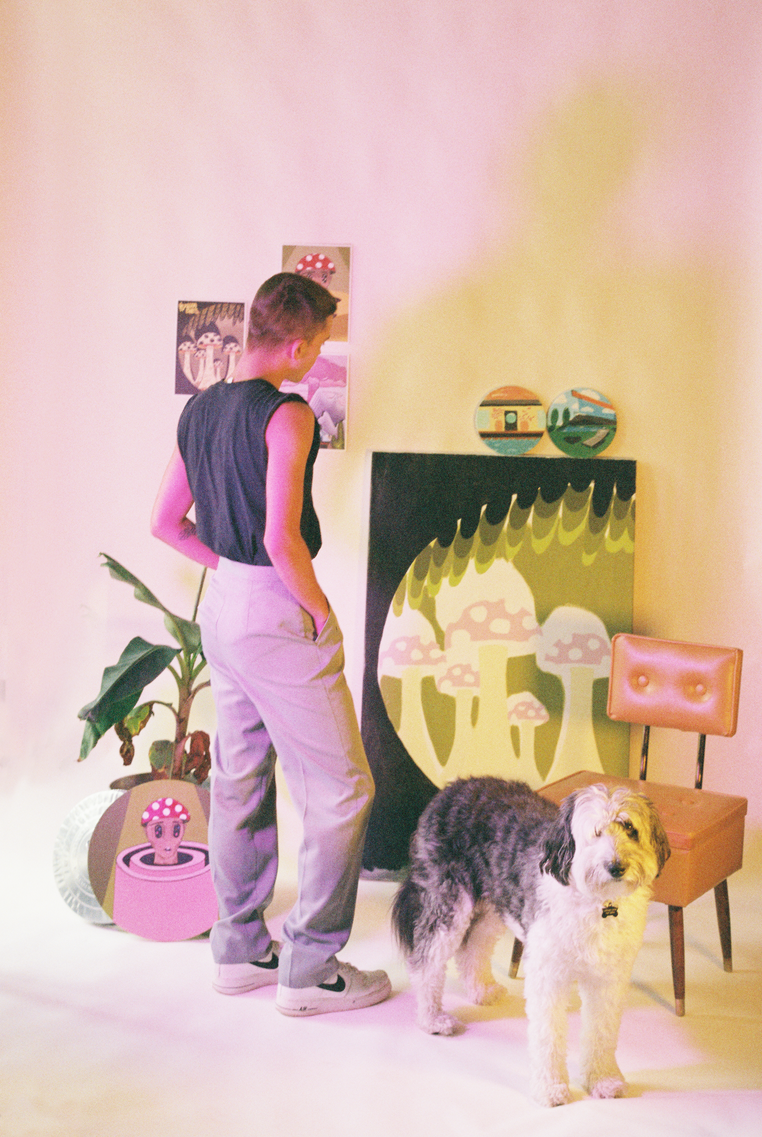
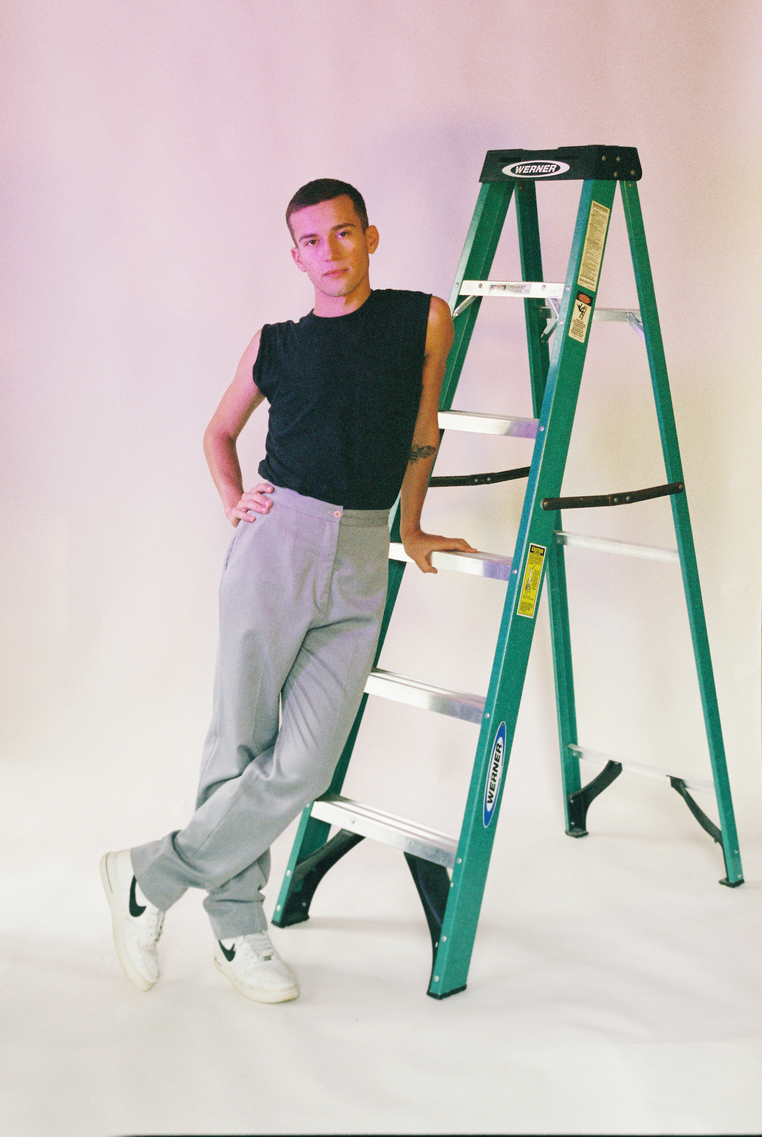
Looking into his future, Max hopes to one day create a queer space in Atlanta that is inviting and cultivates a judgement free zone that brings a sense of community, love, and acceptance. The space would serve as a bar at night, but be heavily involved in giving back to the queer Atlanta community as part of its mission. He hopes this space could also spark creativity and healing through art, with the support of other local artists in the area.
Look for Max’s class at Vesta Movement, and keep an eye out for his next drop of prints by following him on @boyatomicart on Instagram! Head to our shop on our website to order his most recent drop of Boy Atomic prints and listen to his podcast episode!
A Modern Day Silversmith
Written by Alina Kirnie

Silversmithing has been around since ancient times as a way to fulfill many different needs. In the seventeenth and eighteenth centuries silversmithing was a popular occupation in England and France. Silversmiths filled the needs of the upper class in creating beautifully decorated housewares and jewelry. As the middle class grew, the market for silver broadened and more silversmiths were needed to fill the roles.
France and Britain had a guild system in place to bring on new silversmiths. Hopeful, young silversmiths would enter an eight year long apprenticeship with a master silversmith trading knowledge for labor. The next step for the young silversmith was the role of a journeyman. The journeyman could run his own store or continue his education and master the art of silversmithing. Through the guild’s judging, journeymen could earn the master title and the respect of others. These seventeenth- and eighteenth-century silversmiths created items such as mirrors, candlestick holders, and silver wear. At the time, the wealthy were interested in purchasing silver house wares as well as jewelry. These days silver is often seen in jewelry.
The other day I was lucky enough to chat with a silversmith who runs his own shop in Savannah, Georgia. Joe and Lee Richard are a husband-and-wife duo who run “Metals and Paint” together and who have both been in the silversmith business for many years. I was lucky enough to hear the journey that Joe and Lee took to get them to where they are today.
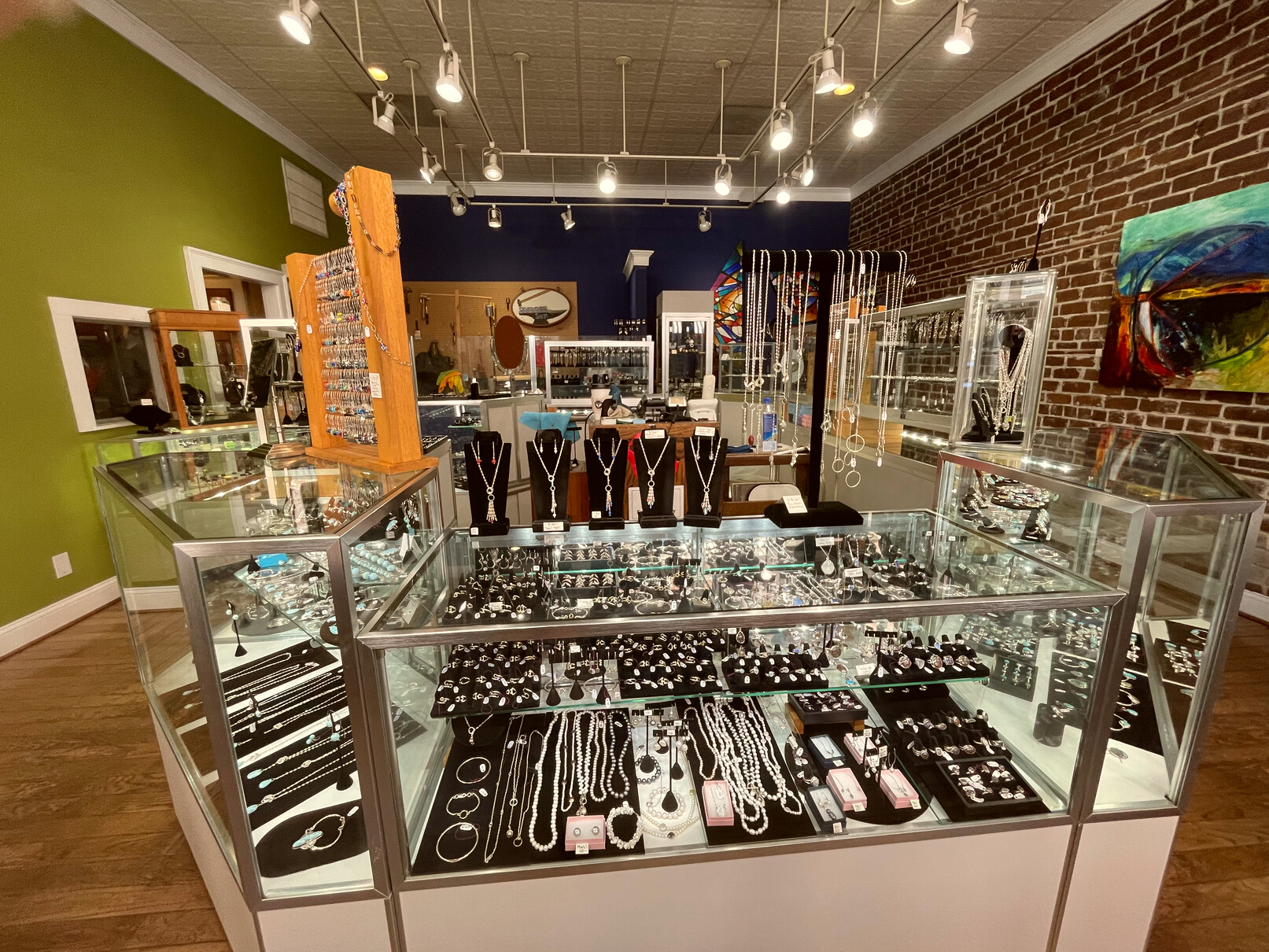
With no formal training, Joe started the business in Chicago after an inspiring talk with a silversmith in Michigan. Taking inspiration from his love of sailing and motorcycles Joe created a unique style of jewelry that grew his business to new heights. He found a busy location at a local mall and set up shop. The mall later shut down so Joe and his wife decided to leave Chicago and looked around the country for a new location to run their business. Settling on Savannah, Joe purchased his current West Congress Street location just a few blocks away from the famous River Street.
Joe and his wife have now been running the West Congress Street location store for decades. Joe is the mastermind behind the designs while his wife Lee runs the marketing. Entering the store, it is a sea of silver staring back, although there are some gold options as well. Customers range from tourists, to locals, to people who have been customers for decades. Joe or his wife work the shop and will gladly assist customers’ needs. Metals and Paint offers a wide variety of jewelry products including earrings, rings, bracelets, and necklaces. Each piece is a work of art that can be layered or just stand alone. My favorite new addition to the store is Joe’s Quarantine passion project, stackable rings. These rings are sterling silver each with their own minimal design. They are perfect for any occasion and are also a great gift! There are also stackable rings styles that match the sterling silver bracelets at the store that work together as a great pairing.
These days there are different jewelry trends popping up left and right. There is stacking bracelets, layering necklaces, or mixing metals. One trend I asked Joe, of Metals and Paint, about was his thoughts on permanent bracelets. Permeant bracelets are silver or gold bracelets that are welded onto the wearer and are marketed to last forever. This trend sells itself to the sentimental types that want a more than just a matching bracelet with a best friend or loved one. The bracelets are dainty chains that can be layered with the wearer’s other bracelets. In response to my question, Joe told me that because the chain is so thin, it is bound to age and eventually break. He told me that over his many years as a silversmith he learned to only create styles that will resist breaking. This is because, people would come back to his store and expect him to repair the jewelry for free. Joe wants to create products that will still be wearable and functional after decades of use. That is why most of his designs are in silver. Interestingly, silver has the same hardness strength as twenty-four carat yellow gold. Similar to gold, silver has different qualities that effect the pricing, but the most common is .925 sterling silver. The .925 refers to the purity of the silver; .925 means that it is 92.5% silver. Silver is a durable metal that can be polished up over time to look like new.
In our interview I asked Joe if he ever feels uninspired as an artist who has been doing what he loves for decades. His response to me was that there is always something that can get done. He has broken his design system down into parts. These parts start at the pre-production design which leads to the different steps of production and working with the metal. When creating a product Joe meticulously sets up his work similar to an assembly line where every part gets added to before they all move on to the next step. When Joe is feeling uninspired, he works on the production side of creating jewelry.
Joe told me that he is inspired to continue creating to always provide his returning customers something new to look at and fall in love with. While new styles are continually being added, Joe and Lee Richard still sell some styles that they’ve had since day one.
After being a customer of Joe for over a year now and only ever running into his wife at the store it was great to finally talk and learn more about his background and how his business came to be what it is today. Joe creates stunning designs and his unique style shines through in each piece. I highly recommend visiting Metals and Paint on West Congress Street to anyone in Savannah or planning to take a trip there!
To hear the full story, visit the podcast section on our website!
The Beauty of Permanence
Written by Gabe Gutierrezi

Paul Sackman illustrating a concept for our editor's tattoo appointment
Image via Gabriell Gutierrez
Tattoos as a form of art cascades into countless renditions of styles and methods. Whereas some tattoos are more significant to someone’s cultural background or identity, others get tattoos to hang on to a certain memory or feeling that they wish to carry forever. However, there are also the patrons who favor the spontaneous activity of getting a permanent work on their body with little to no thought behind it. At the end of the day, as long as the artist is paid for their work, it doesn’t really matter too much. That is at least how our featured artist, Paul Sackman, views the work of tattooing.
Originally from North Carolina, Sackman made his way down to Savannah, Georgia to pursue his career in freelance tattoo art. His work began as simply wanting to pursue a career that did not require a background in higher education. Not blending with a traditional school setting, Sackman turned to art as a form of expression and purpose. Sackman currently works as an artist for the Anonymous Tattoo Shop located along Savannah’s iconic Bay Street.
Paul’s journey into tattooing came from a large support system of friends and family. Upon sitting with him, Sackman reflected on his earliest tattoos he had done. Most of his early works were of small freehand pieces that he would illustrate on his closest friends. Although he was still a novice, that did not bring his friends to hesitate on allowing them to be his canvas.
To make the interview a more in depth experience on both ends, I decided to get a tattoo done by him. We had been in contact for a few days, shooting ideas back and forth discussing what I would like to have permanently drawn onto me. This is not my first time getting tattooed, so I was no stranger to what I do and do not like. Finally, we had created a simple linework design based on The Star tarot card.
Sackman is extra precautious and attentive to detail when it comes to linework tattoos. He made it clear that he enjoys perfecting detailed works on a multitude of different styles, fully capturing the essence of each project. Although he also loves shading and complex geometric shapes, I did want my newest addition to coordinate with my existing tattoos.
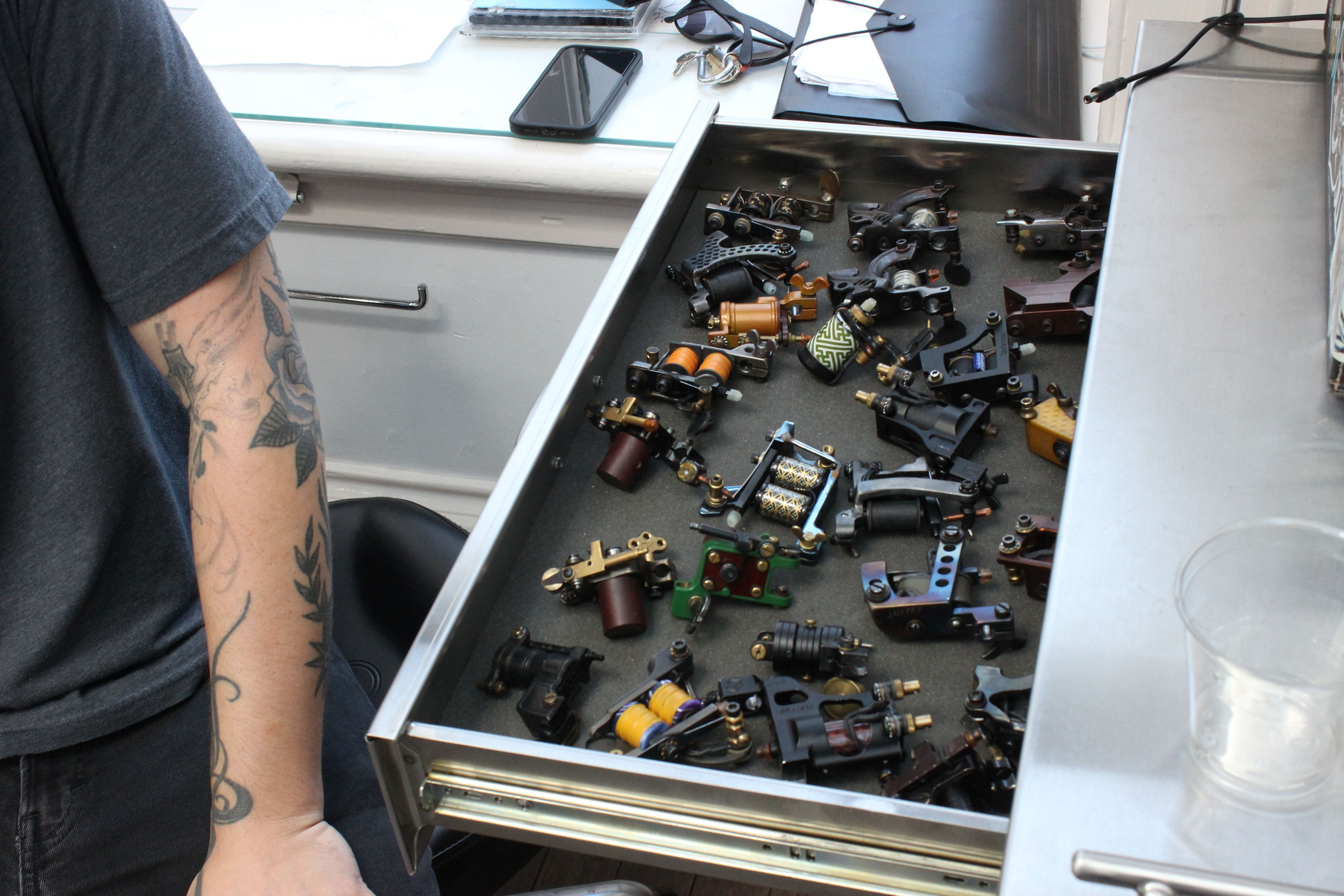
A quick look at Sackman's wide collection of different tattoo gun pieces
Image via Gabriell Gutierrez
Sackman’s process of tattooing is simple and clean, as it should be. Paul made it clear from the beginning that he wanted the work to look perfect. Afterall, it is attached to me for life. As he set up his workspace, we discussed further about our lifestyles and how it is reflected in the art we create. He explained how moving further south had exposed him to a lifestyle that moved at a much slower speed than before. Coming from New Jersey, I knew exactly what he was referring to. However, he saw the beauty in taking time in what you love most and not rushing between different chapters in life. It had enhanced his tattooing both as an artist and a businessman.
Paul creates wide gaps of time between scheduled appointments. An important factor of working in the artistic field is time management and meeting deadlines. His schedule is catered to hold one or two major projects during the workday. The gaps of time in between each appointment is utilized to the fullest extent. Either to readjust his workspace for his next client, work on a few walk-ins for extra commission, or to simply give himself a break. He elaborated on how some pieces could take up to hours at a time, even having to be spaced out on different days due to the high intensity of the artwork. Although he loves the work he makes, he is also not afraid to turn down a client if the piece is out of his comfort zone.
The though process for Paul’s artistic journey is to put himself and his identity as an artist first before he is ready to take on something new or risky. It’s great to expand your skills and work with new people, but the world of tattooing can bring upon some rather intense clients. Sackman had refused dozens of visitors simply because he puts himself first when working. Tattoos that might come across as controversial or eerie are turned down. Paul never gives the cold shoulder when turning away a client. Instead, he helps the consumer learn about why they might want to change their mind before making such a permanent, and costly, decision. Whereas more artists are working for the commission and legacy, Sackman works for himself and his pride as a tattoo artist.
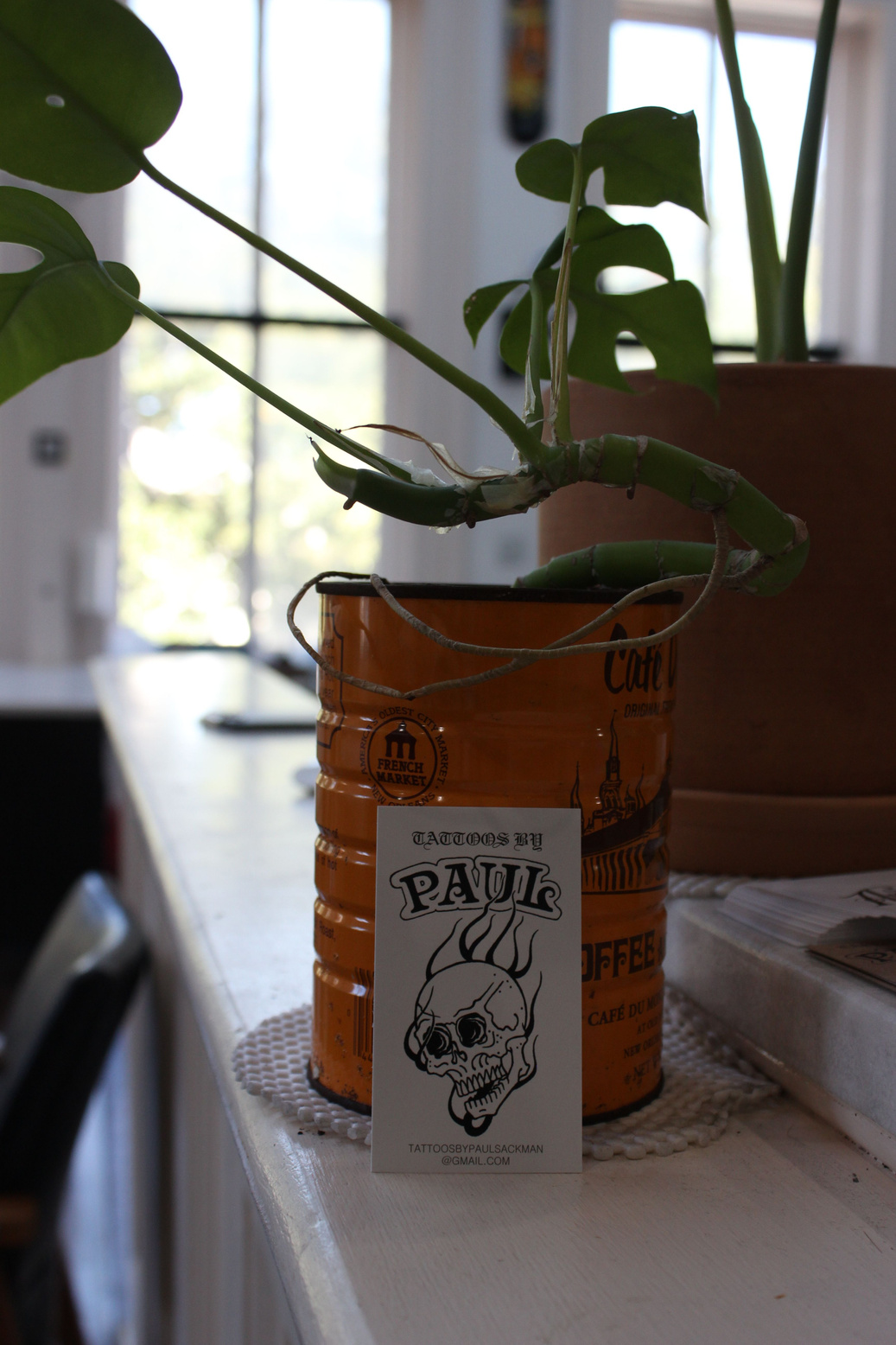
Paul Sackman's business card located in within his studio
Image via Gabriell Gutierrez
Kenny Boots
Written by Gabe Gutierrezi
Craving Custom, Kenny Boots
The artistic process is not always linear. It encourages artists to undergo various stages of their creative development upon finding their true niche. Where some artists may find their purpose early in their career, others open their mind to the vast opportunities the creative field has to offer. Our featured artist, Kendrick (Kenny) Boots, models as a strong example of taking life by the wheel and cruising along to explore the true beauty in vehicle customization.
Originally from Denver, Colorado Kenny Boots currently resides in Atlanta, Georgia to pursue an education in industrial design from the Savannah College of Art and Design. The study of industrial design connects the mechanical and aesthetic aspects that cater towards Boots’s fascination in automotive construction. Whereas other artists in his field turned away from formal education, Boots found the opportunity to explore a different aspect of automobiles that could not be taught within a garage.
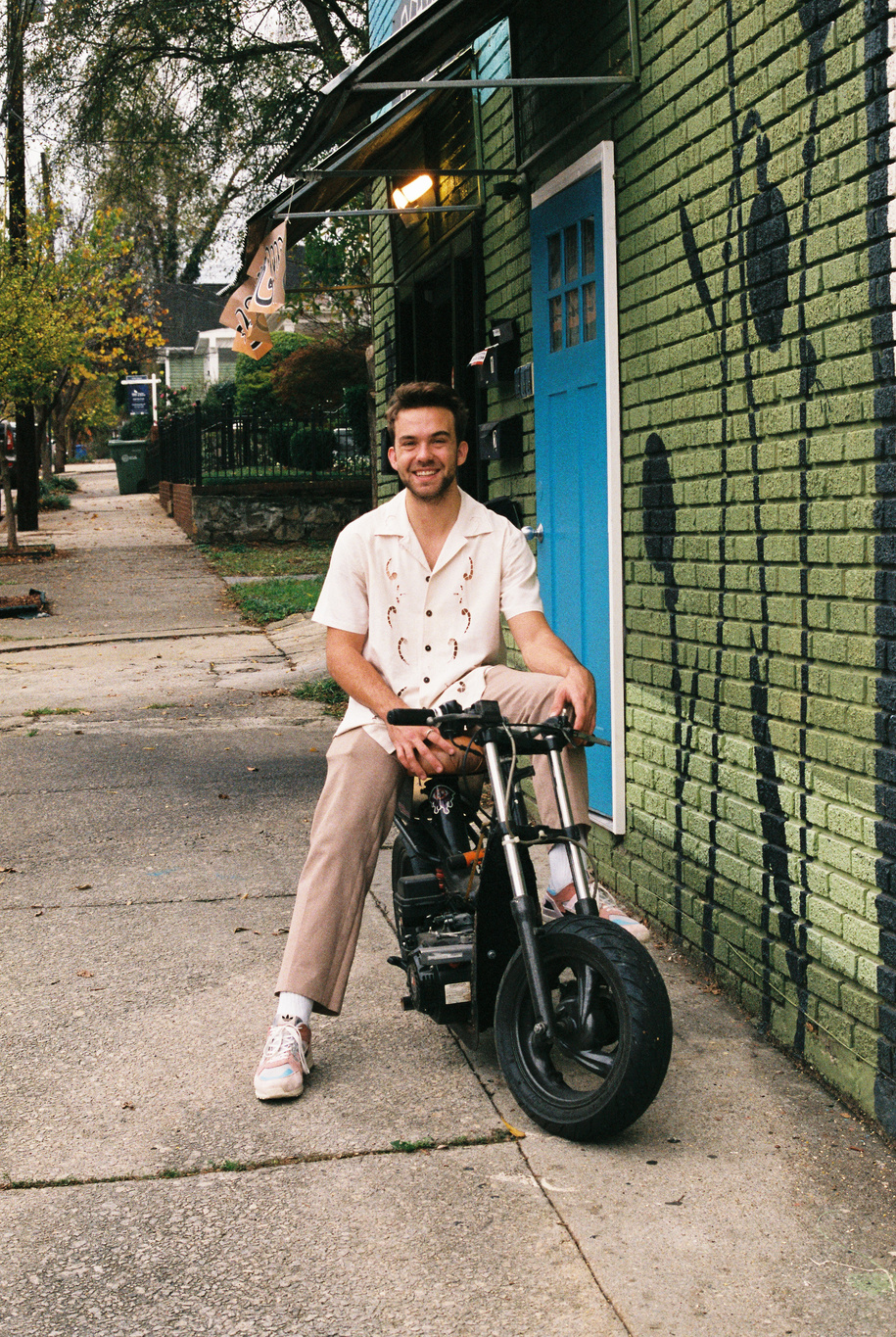
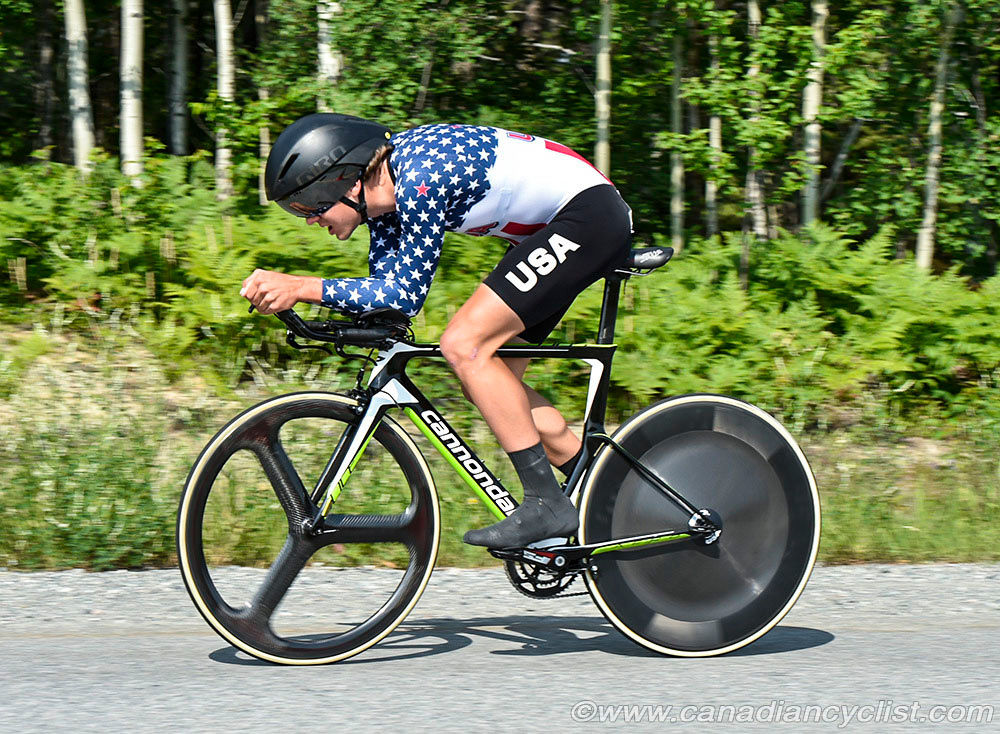
To Pedal Without the Metal
Before becoming a SCAD student, Kenny was defiant through his ambitious attitude and his need for speed. His first introduction to the world of cars and racing came from his early career as a competitive cyclist. Bike racing was a new concept for the young creative; he had only been introduced to the sport through his boy scout troop as a new group activity. What Kenny found to be the most fun was not only the quality time with his friends, but the rush of adrenaline from going at a high speed from sheer manpower alone.
The takeoff towards Kenny’s cycling career worked as a catalyst to jumpstarting his career as an artist. His determination and head-strong attitude pushed him to compete on an international level. Representing the U.S.A. on their men’s youth cycling team and winning themselves the title of world champions in 2016. Earning such a high title and accomplishing so much before the age of 18 ensured Kenny into a life well made. However, he saw his talents and turned it into an opportunity. Kenny embraced his love for fast paced sports and vehicles and wanted to take his skillset to the next level.
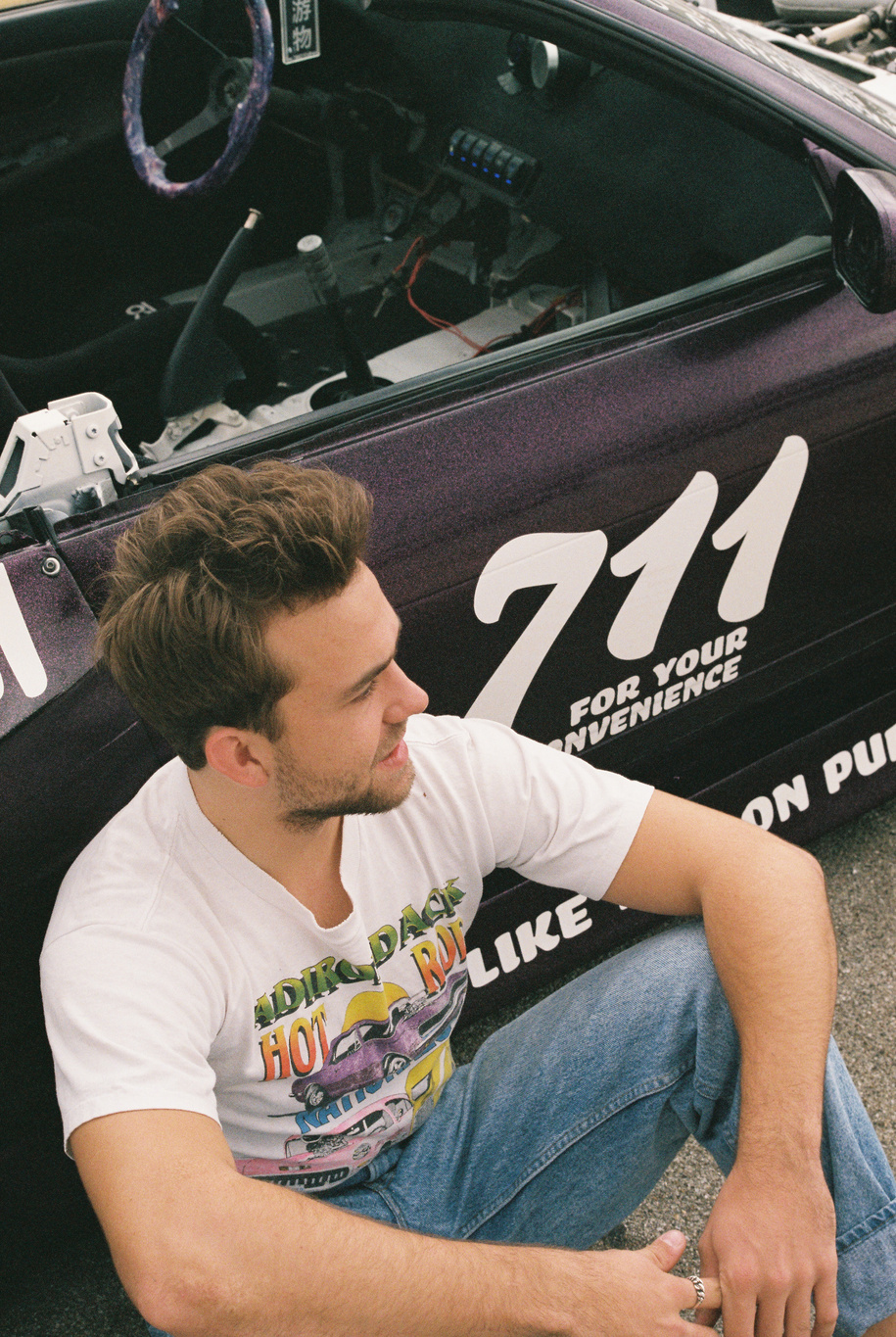
Starting Where Most Stop
Whereas most artists gain inspiration and passion from their families and home life, Kenny Boots found his fascination with automobiles completely out of left field. As the only member of his family to have struck an interest in mechanics Kenny became a self-taught artisan. His first car to practice and experiment with was a 1990 Mazda Miata. As an effortless way to ease into the basics of car repair, Kenny followed tutorials and directions from YouTube videos. With the success of following instructions and translating new terminology, Kenny successfully reworked the brake system. The instant gratification and success of trying something new encouraged Kenny into fully embracing the craft of vehicle modulation and repair. He worked on every aspect of the Miata that could be touched. Following other tutorials on how to work car transmissions and motors to the point where he felt comfortable to experiment on his own.
Kenny defies himself as a hands-on learner, finding the best learning opportunities to be where the mind and body are both put to work. His skillsets and ambitions grew alongside each other as he pushed himself to tackle larger projects and broaden his range. More recently Boots refurbished his Nissan 240SX-S13, his biggest personal project to date. The car was thought to be out of commission up until Boots saw its true potential. He had a vision and was willing to do whatever it took to bring it to life.

From working on different scales of other projects leading towards his Nisan, Kenny noticed other methods and skills that revolve around automobile construction. Building a mental encyclopedia of different car parts and information, Kenny learned the true value of what makes a car special. This came in handy when looking through different deals online to find pieces and
models that sellers do not seem to know the true worth of. Collecting used car engines and shells introduced Kenny to the world of reselling and marketing. Buying parts in bulk and reselling the remaining pieces allowed extra income to make its way into new projects, scaling up the quality and intensity of his work. It also allowed Boots to create new connections across the country and even overseas with other mechanics who share the same vision. Making a name for himself within a newly found community inspired Kenny to tackle larger projects and diversify his field of interest, bringing him to where he is today.
The Nissan represents Kenny’s skills and his vision as an artist. He views his work as breathing new life into something others may have given up on. To muster the willpower and perseverance to dedicate years and countless dollars towards a passion project is what sets Boots out from your everyday garage worker. The looming threat of failure and loss was never in his field of sight. Having his staunch support system pushed Kenny to accomplishing his largest project to date and being able to display his accomplishments through means of car shows and drag racing.
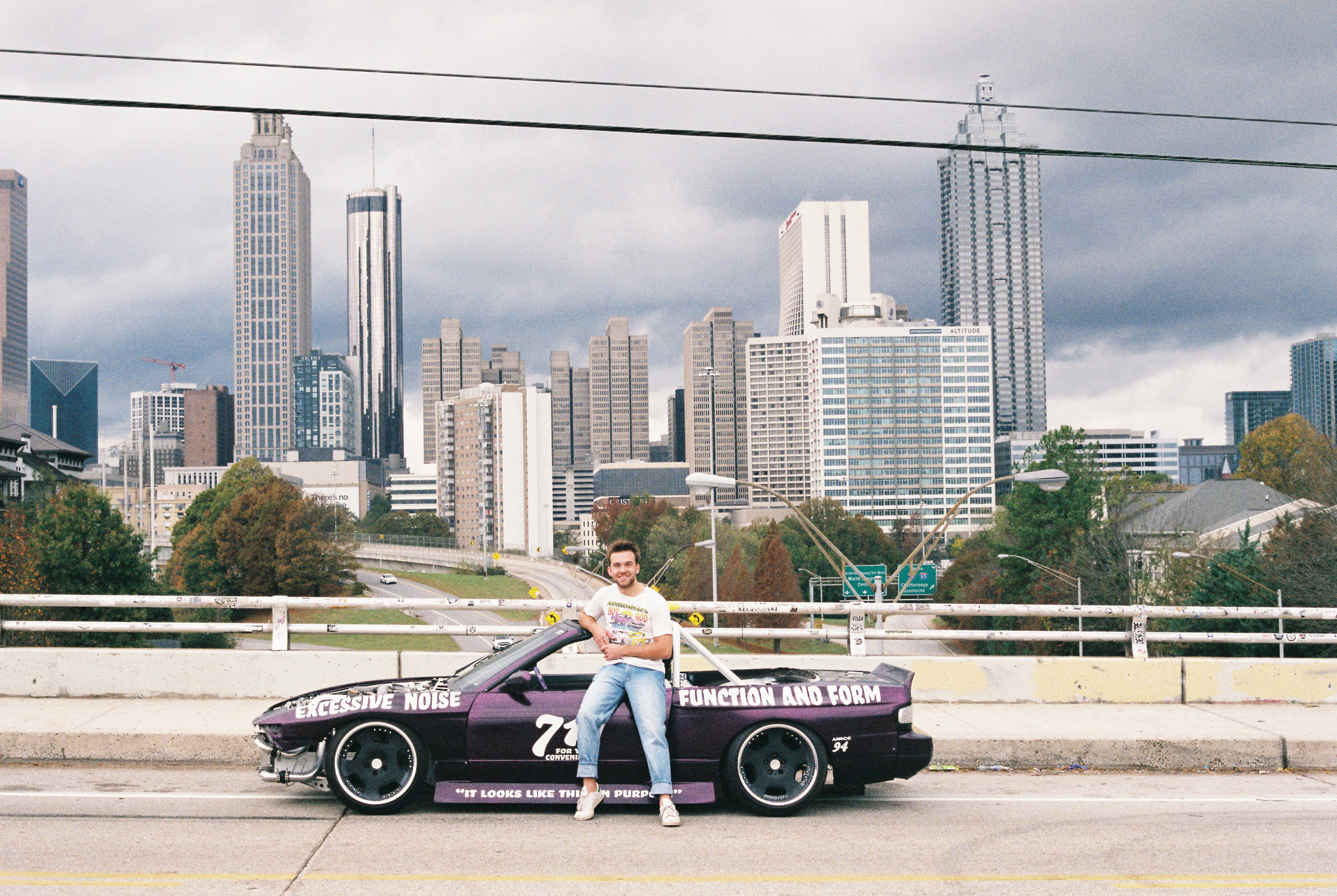
Dragging and Drifting: A Racer's Catwalk
The field of automobile construction and repair could seem daunting to those who are only vaguely familiar with the concept. Understanding different models and brands, and not to mention the components that create the car, all require a vast knowledge of history and an understanding of the trade. However, what makes that any different from the world of art and fashion? Both industries are built upon similar values within design and function, trying to send a message through innovating what has come before. And much like fashion, the automobile industry also has their methods of displaying their work to the world through the art of drag shows.
With his Nissan fully functional and decorated, Kenny wanted to display his pride and joy to a wider audience. Local car shows will open tracks for applicants to go behind the wheel and show off their newest projects in style. However, the practice of drifting is not simply for anyone. It takes extreme control, patience, and knowledge of the vehicle to perform safely and gracefully as possible. Kenny practices on local tracks and even near lakefronts. Perfecting his technique to display not only his skills in driving but ensuring that his car is put on full display. Drifting is an artform within itself that encompasses elements that resemble runway fashion. Despite the subject manner being different, both shows come together as a form of celebrating the genius of the creator.
Boots: Finding the Right Fit
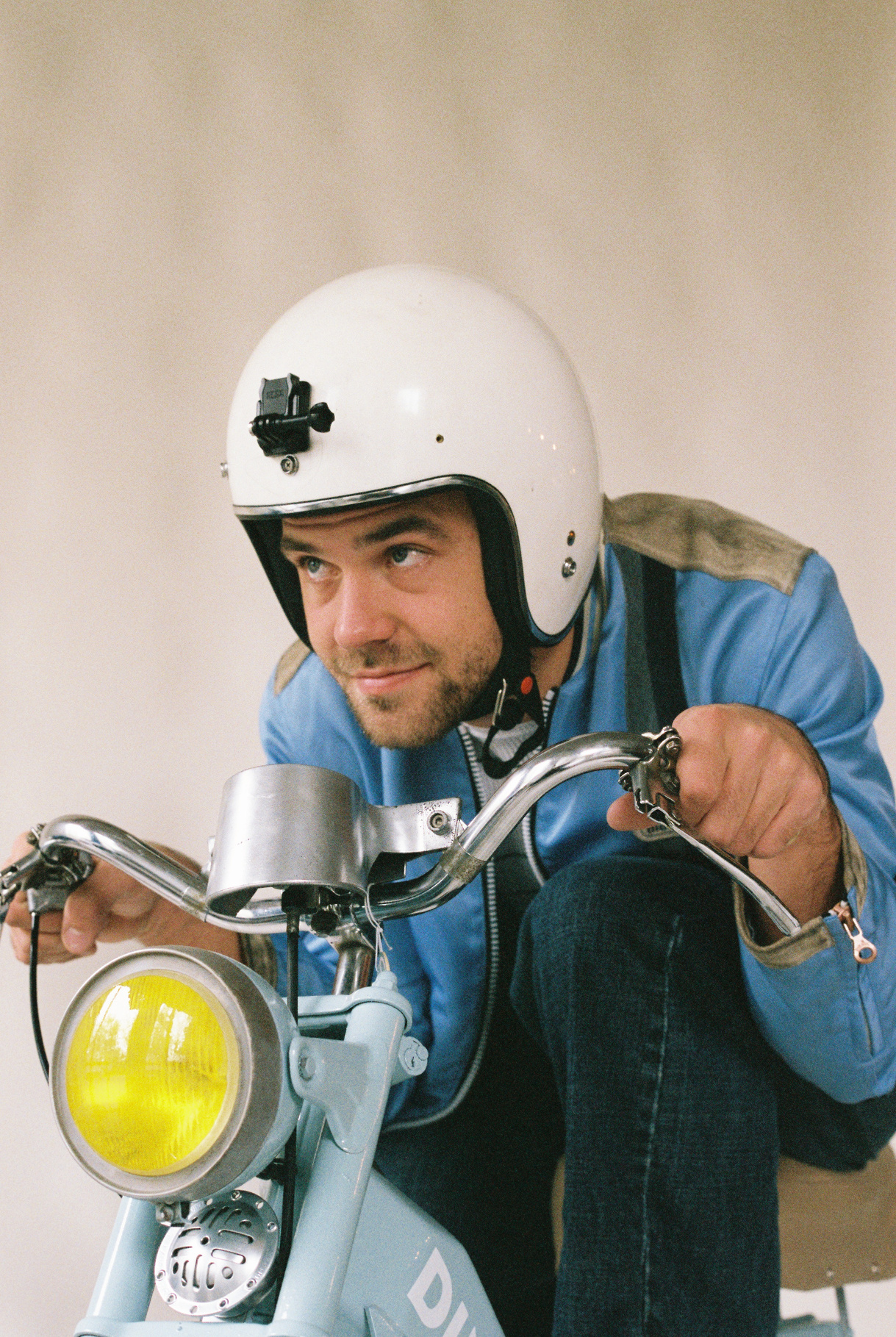
An artist’s success derives from how effectively they can present their aesthetic and message to a wide audience. Capturing the components of their styles and inspirations while creating something that is entirely new. Prior to his college experience, Kenny Boots had been slowly establishing his personal concept of who he is as an artist. Taking inspiration from pop culture and artistic movements based on his childhood. He incorporates his niche interests through automotive customization and design aesthetics from the 1960s. Currently, Kenny has been able to sharpen his skills of tactical building while also broadening his view on developing a personal brand aesthetic.
A driving force that keeps Kenny moving is the open opportunities to innovate and reinvent what has been done. His background in automotive repair and customization leaves the young creative to question what can improve what we already have. In school, Kenny has utilized his current studies in industrial design to help guide his outlook on consumer needs. Finding the perfect balance which highlights his strengths in the vehicular industry while sourcing new and creative ways to make impactful change.
Kendrick Boots represents the new and creative mind within automotive design. Finding how to utilize form and function to execute his vision. His portfolio of past works, ranging from a 1970s scooter to a 1994 Nissan 240SX, defies how Kenny had not only reestablished his product but his own profile as an artist.
It's Niche to Meet You
Podcast and Documentaries on Niche Artists
Highlighting Max Samrau, the mind behind Boy Atomic's illustrations and paintings, where he finds his inspirations, and what his aspirations are as a young artist.
Highlighting A duo exposition of artists Diego García and Jacob Dudek and how their collaboration came to be.
Spotlighting silversmith Joe Richard, owner of Metals and Paint, a jewelry store located in the heart of downtown Savannah, Georgia.
A glance into the art of tattooing through the mind of Paul Sackman. Learn how his creative journey came to fruition and is set on achieving more.
IT'S NICHE TO
MEET YOU
CREO
collective
Our featured artist, Kendrick (Kenny) Boots, models as a strong example of taking life by the wheel and cruising along to explore the true beauty in vehicle customization.
Shop - New Arrivals
Category
v
Artist
--
Metals & Paint
Boy Atomic
Diego García
Jacob Dudek
Paul Sackman
Kendrick Boots
v
Price
collective - shop
Hammered Bracelet
$45
Twist Bracelet
$60
Square Ring
$15
Twist Ring
$15
Atomic Car Print
$30
Boy Atomic
Print
$30
Atomic Forest
Print
$30
Custom Atomic
Piece/Print
$60
Pigeon Lighter
$10
Sticker Pack
$8
Custom Bike
Prices Vary
Guy Print
$15
Tattoo Print
$15
Decked Out Ride
Prices Vary
I Think You know
Pigeon Print
$20
$30
Flash Art Shirt
$20
Book an Appointment!
Custom Paint Job
$400
Mechanical work
Prices Vary